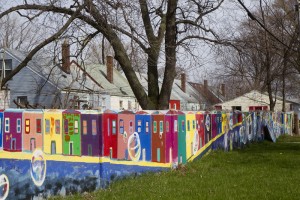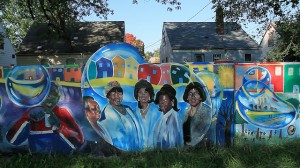Associate Professor of Law, Sarah Schindler, wrote an article about how architecture has played along with racism and discrimination in the most unseen ways that people often don’t realize. With the feedback she received from peers from Columbia Law School and American University’s College of Law, she includes research and has the support for the information she provided. In the article, she writes about how some infrastructure was made to prevent certain groups of marginalized minorities having access to be able to get to areas that were premindomently reserved for upper and middle class white. These factors partaked in ways that separated and isolated a vast majorities of communities from one another because one feared that the other would violate their territories. The court system did not see it as this way, they saw these infrastructure as a inconvenience for some not realizing what it’s creating for others.
In Part I, it discussed about architecture being used a type of regulation among certain groups and classes of people. “Architectural regulation is powerful in part because it is unseen/ it “allows government to shape our actions without our perceiving that our experience has been deliberately shaped.” (Schindler). I annotated that this describes that government and the system makes changes and creates regulations that benefit certain groups while limiting and restricting it for others. An example of this is when a bench has arm rests to prevent homeless people from lying on them to take naps. I recall reading an article years before that a certain city or country actually installed spiked-like figures on the seating and backs on the benches resembling a needle or nail bed to prevent homeless people from laying on them. As I also recall, the reaction to such a thing were stating that it’s cruel and unfair to treat them poorly. That type of infrastructure being made is made beneficial to those who have homes and can just use the armrests to, obviously, rest their arms after running errands but it actually makes it hard for homeless people to lay and sleep because it’s blocking the function of bench also acting as a bed for them.
In Part II, it talks about the actual practice of architectural exclusion being used. Robert Moses was considered as the “Master Builder” of New York infrastructure creating many of its land. His biographer suggested that he favored upper and middle-class white people who owned their own vehicles as opposed to lower class groups, as mentioned African-Americans, because of his bias distinguishing of social-class and racial prejudice. An example of this is shown earlier in the reading where it mentioned that he created a number of low-hanging overpasses and bridges that led to Jones Beach to prevent buses from going to there. This decision prevented those who relied on public transportation such as people of color and poor people from receiving access to reach those areas. Another example of how public transportation are limited to reach certain areas is where the designated transits stops are placed.
A seventeen year old woman, Cynthia Wiggins, was hit and killed by a dump truck as she was attempting to cross a seven-lane highway to a mall where she worked. The reason because of this incident is because the bus stop for the mall was across the street from it on the other side of the highway. This was because during a conversation a mall store owner had with one of the officials recalled them saying that they did not want to attract the type of people that rode to bus into the mall. This shows racial profiling and discrimination against a certain group of individuals that depended on the public transits. Also, while the same small allowed charter buses to make stops there, they wouldn’t oblige the same for the city’s transits because, once again, they did not want to attract certain groups of people into their property.
Aside from architecture limiting and routes being placed outside certain areas in order to discourage certain groups that took public transportation from entering such territories, infrastructure was almost made to separate communities. In the 1940s, a private developer in Detroit constructed a six-foot-high wall known as the Eight Mile Wall to separate a black neighborhood from a new white one that was to be made. The wall still exists in the area today although the neighborhoods around it are no longer segregated despite Detroit still being one of the most racially segregated areas in the United States. Recently in 2014, a ten-foot-high, 1,500-foot-long fence that separated a white suburban area from a black one was taken down. It was built in the 1950s to keep crimes out of the city of Hamden, Connecticut from New Haven. However, this made it difficult for those living outside of the Hamden territory to reach certain areas to run errands. As more occurrences of these walls and fences were built up to “isolate” violence and crimes, it made it difficult for those who were not involved in the actions to be able to reach areas for the potentially of receiving jobs and running personal errands. I believe it still goes today when upper class neighborhoods have spiked fences and a security coded entrance so that only residents or friends of residents are allowed to enter the premises. Anybody that doesn’t live there or know a personnel there is restricted and almost prohibiting from having an access in the area. There’s a lot of that especially in suburban areas in Georgia.
Many people don’t realize that certain areas were built to either isolate them or because it was made for them. This causes problems for marginalized groups while benefiting the vast majority. While most infrastructure and areas would believe it’s supposed to bring protection into certain, it leaves out and makes it harder for people seeking opportunities to access them. You would think that if they would have signs stating who they serve to and didn’t that it would give a clearer message of who they welcome and don’t, but nowadays it’s no longer signs that make the statements. It’s the architecture of such areas that is built to separate and segregated groups from each other. People don’t live in the fear of their protected areas to eliminate violence, they live in a bias and prejudice role that holds them up higher against a lower and poor classified group of people. That’s how most of the country’s architecture was made, to keep one preferred group in while pushing out the others they did not prefer.
















